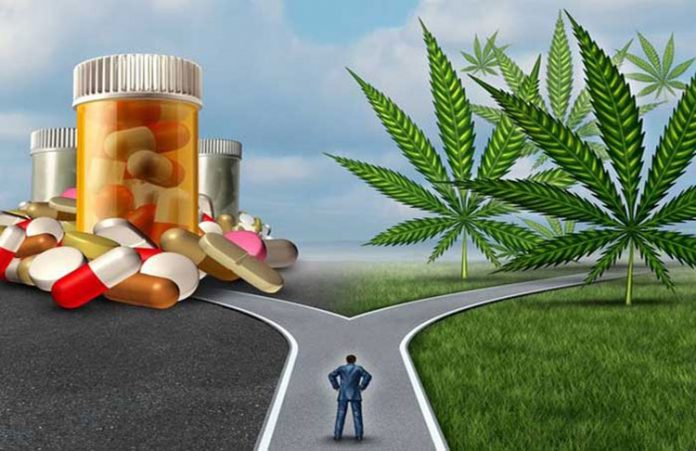The opioid epidemic has continued into 2018, and several state and local governments are now suing drug companies and doctors for alleged misleading advertising about the costs and benefits of opioids. While lawsuits may grab headlines, it’s not clear whether they will have any effect on the epidemic itself. So in the meantime, other remedies need to be considered, and marijuana may be one.
The idea that marijuana can relieve pain is widespread, and WebMD notes that pain relief is the main reason people ask for a prescription for medical marijuana. Since opioids are also used to treat pain, it’s not a big leap to suggest that marijuana could be used instead.
However, many states with medical marijuana laws don’t allow chronic pain to be used as a reason to prescribe medical marijuana. Many doctors support this prohibition since the long-term effects of marijuana are largely unknown, in no small part due to the federal Controlled Substance Act of 1970 that makes it very difficult to conduct high-quality medical studies on the effects of marijuana.
Even though it’s hard to directly study the effects of marijuana on pain, there are ways to examine whether access to marijuana is related to opioid deaths. A few health studies have found a correlation between the two. One found that states that allow medical marijuana experienced 25% fewer deaths due to prescription drug overdoses than those that don’t allow it. This suggests that in some places medical marijuana is already serving as a substitute for opioids.
Another study by David Powell, Rosalie Licardo Paculla, and Mireille Jacobson recently published in the Journal of Health Economics examines the relationship between medical marijuana laws and opioid deaths more closely. Instead of considering all medical marijuana laws the same, they examine the avenues that enable marijuana to be an effective substitute for opioids. States that allowed marijuana to be sold to qualified patients through dispensaries as part of their medical marijuana laws had opioid mortality rates that were 20% lower than those in similar states without legal and operational dispensaries between 1999 and 2013. The authors also find that adopting a medical marijuana law without dispensaries had almost no effect on opioid deaths.
Further, when states began to more tightly regulate dispensaries after 2010, the authors find that the effect of medical marijuana on opioid mortality rates weakened. So, it appears that for marijuana to have an effect on opioid overdoses, there needs to be a clear, legal, operational system in place that enables qualified people seeking pain relief to easily purchase marijuana as a substitute for opioids.
It’s important to note that the authors of the study still emphasize caution when it comes to marijuana. As mentioned previously, the long-term effects of marijuana use are largely unknown. And even if marijuana reduces opioid overdoses, it could increase deaths via drugged driving or have other adverse public health effects.
That said, many states, including several that have been hit hard by the opioid epidemic such as Ohio and West Virginia, have either recognized the medical benefits of marijuana or the futility of trying to eliminate its use and enacted some type of medical marijuana law. Others are debating one or, like Virginia, have recently passed one through their legislature that is awaiting the governor’s signature.
However, many other hard-hit states, particularly those in the south, have no broad laws legalizing marijuana for medical or recreational use. Additionally, the medical marijuana laws in Ohio, West Virginia, and several other states are fairly restrictive, which means they probably aren’t having a big impact on opioid overdoses.
The research by Mr. Powell and his coauthors provides some evidence that states with restrictive marijuana laws should expand them and those without laws should enact them, but whether they will is unclear, especially with the current Federal Department of Justice taking a hard stance against the use of marijuana.
One recent estimate from the president’s Council of Economic Advisors finds that the opioid epidemic is costing the country hundreds of billions of dollars per year in the form of lost productivity, health care costs, and costs to the criminal justice system. Some of the rise in opioid overdoses is likely caused by job loss and economic despair, so we may see a decline as the economy continues to strengthen. But the economy is already pretty strong—despite the recent market dip— and opioid overdoses continue to plague many parts of the country. Better access to marijuana is not going to single-handedly fix the opioid problem, but it should be discussed as part of the solution.














